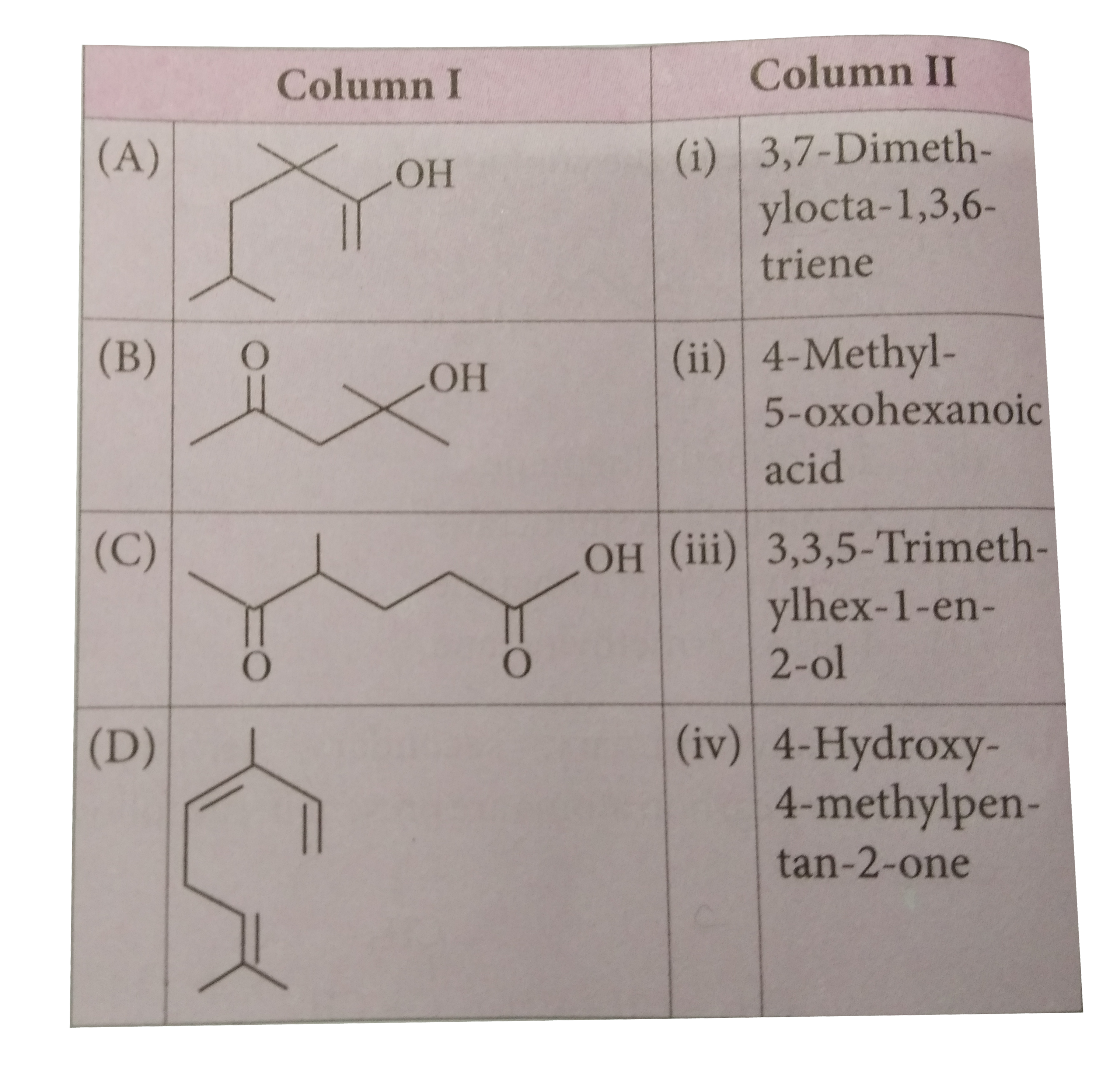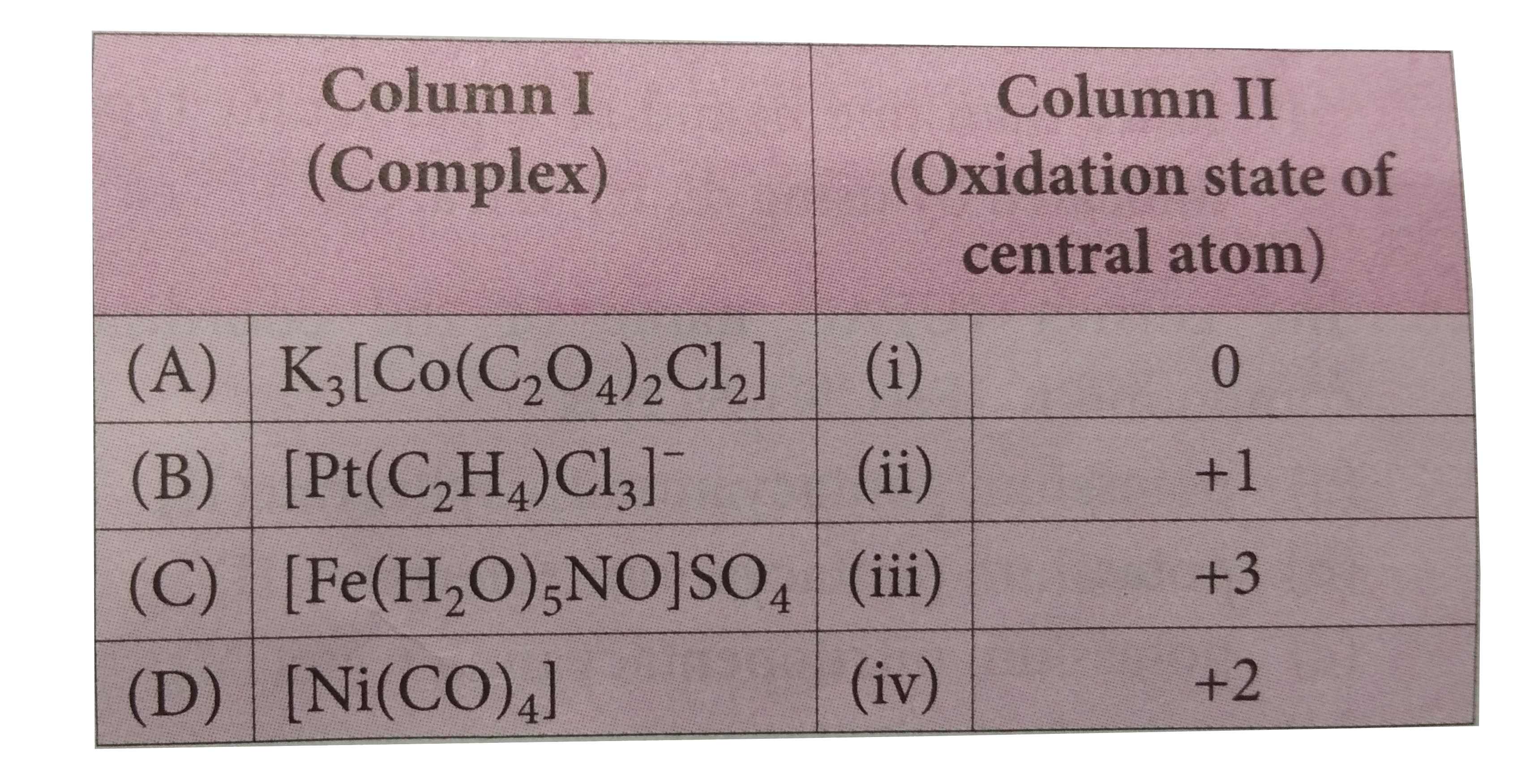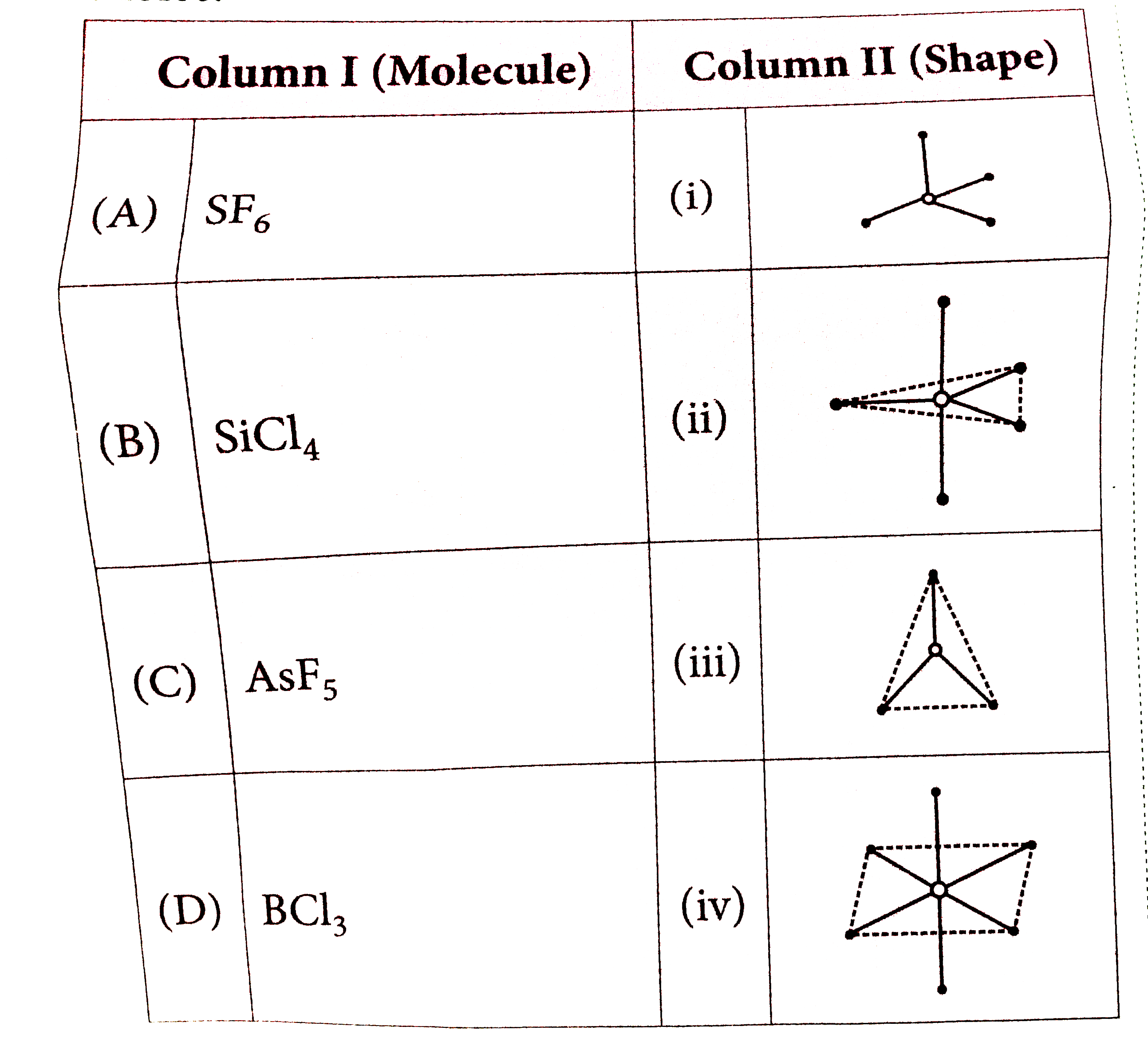Match the compounds given in column I with the IUPAC names given in column II and mark the appropriate choice.

A→ii,B→i,C→iii,D→iv
A→iv,B→ii,C→i,D→iii
A→i,B→iii,C→ii,D→iv
A→iii,B→iv,C→ii,D→i
The correct Answer is:D
Step by step video & image solution for Match the compounds given in column I with the IUPAC names given in column II and mark the appropriate choice. by Chemistry experts to help you in doubts & scoring excellent marks in Class 11 exams.
Updated on:21/07/2023Topper's Solved these Questions
- ORGANIC CHEMISTRY-SOME BASIC PRINCIPLES AND TECHNIQUES Book:NCERT FINGERTPS ENGLISHChapter:ORGANIC CHEMISTRY-SOME BASIC PRINCIPLES AND TECHNIQUES Exercise:Exemplar Problems
Explore 12 Videos
- ORGANIC CHEMISTRY-SOME BASIC PRINCIPLES AND TECHNIQUES Book:NCERT FINGERTPS ENGLISHChapter:ORGANIC CHEMISTRY-SOME BASIC PRINCIPLES AND TECHNIQUES Exercise:Assertion & Reason
Explore 13 Videos
- HYDROGEN Book:NCERT FINGERTPS ENGLISHChapter:HYDROGEN Exercise:Assertion And Reason
Explore 15 Videos
- PRACTICE PAPER 1Book:NCERT FINGERTPS ENGLISHChapter:PRACTICE PAPER 1Exercise:Practice Paper 1
Explore 44 Videos
Similar Questions
Which of the following is the correct IUPAC name?
View SolutionAssertion: Hybridisation influences the bond length and bond enthalpy in organic compound.
Reason: More the s character of hybrid orbital, shorter and stornger will be the bond.
View SolutionAssertion : In atomic form hydrogen consists of one proton and one electron.
Reason : In elemental form hydrogen exists as a diatomic molecule and is called dihydrogen.
View SolutionThe equilibrium constant at 717 K for the reaction: H2(g)+I2(g)⇐2HI(g) is 50.
The equilibrium constant for the reaction:
2HI2(g)⇐H2(g)+I2(g) is
View SolutionMatch the complexes given in column I with the oxidation states of central metal atoms given in column II and mark the appropriate choice .

View SolutionMatch the examples given in column I with the shapes of the compounds given in column II and mark the appropriate choice .

View SolutionMatch the isomers given in column I with their names given in column II and mark the appropriate choice.
View SolutionMatch the compounds given in column I with column II and mark the appropriate choice.
View SolutionMatch the vitamins given in column I with the deficiency disease caused by it given in column II and mark the appropriate choice
View SolutionMatch the constants given in column I with their values given in column II and mark the appropriate choice.
View SolutionMatch the molecules given in column I with their shapes given in column II and mark the appropriate choice.

View SolutionMatch the compounds given in column I with the IUPAC names given in column II and mark the appropriate choice.

View SolutionMatch the constants given in column I with their values given in column II and mark the appropriate choice.

View SolutionMatch the compounds given in column I with oxidation states of carbon given in column II and mark the appropriate choice.
View SolutionMatch the complexes given in column I with the oxidation states of central metal atoms given in column II and mark the appropriate choice .
View SolutionMatch the examples given in column I with the shapes of the compounds given in column II and mark the appropriate choice .
View Solution
